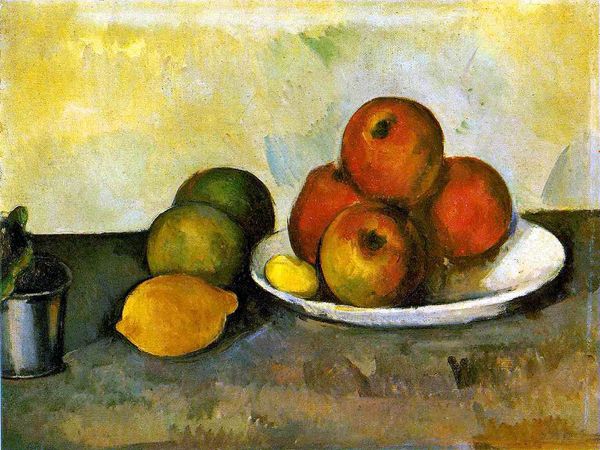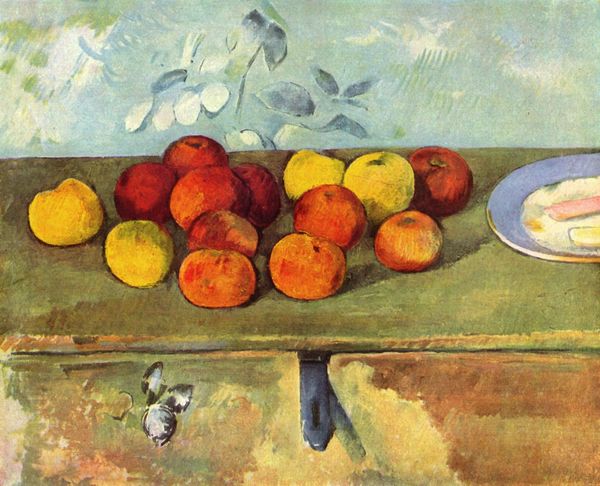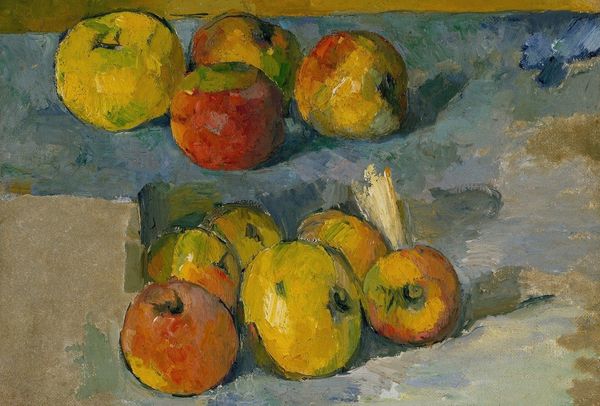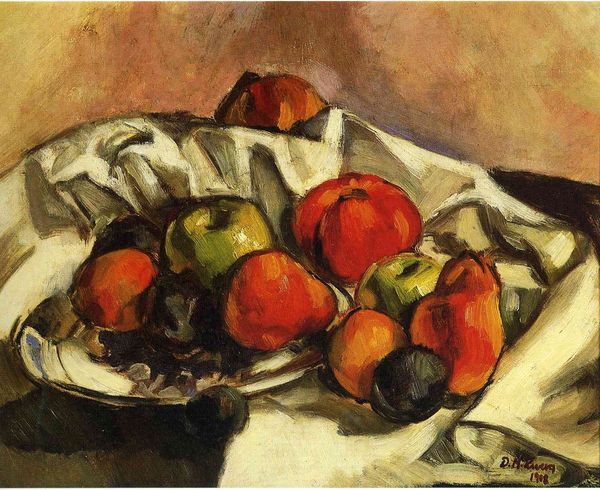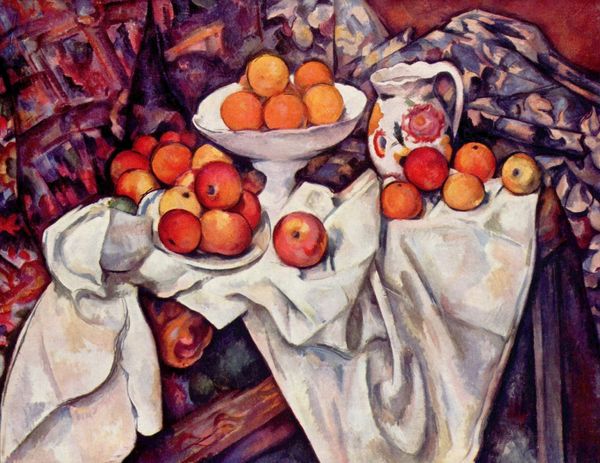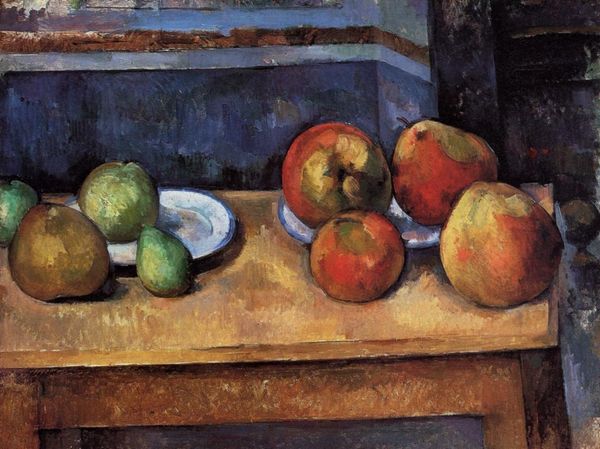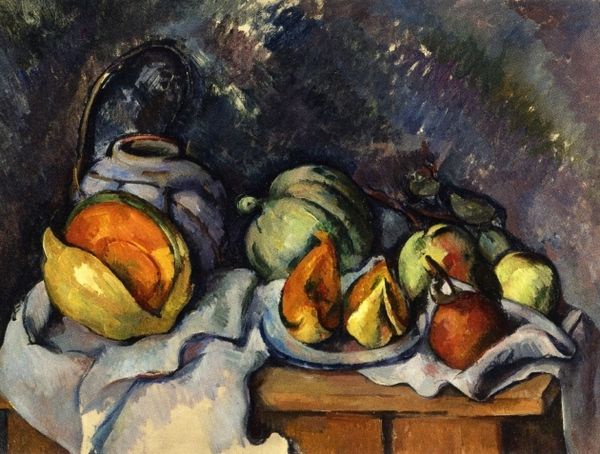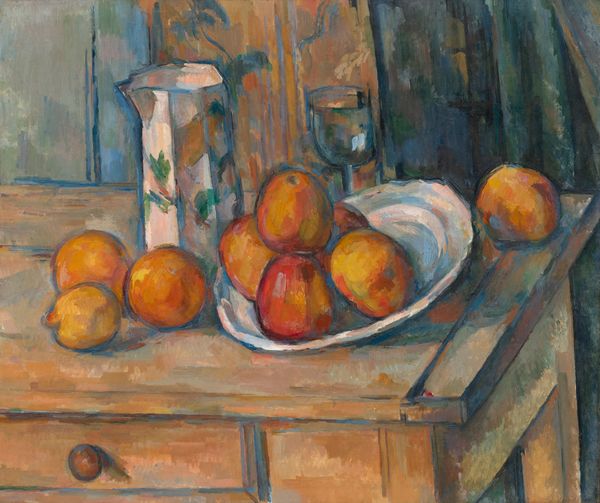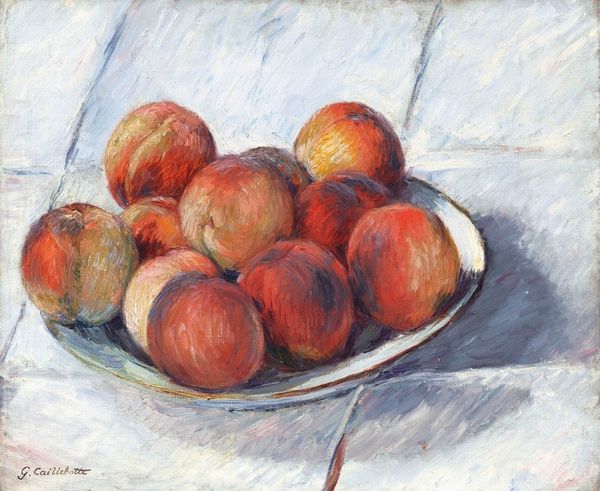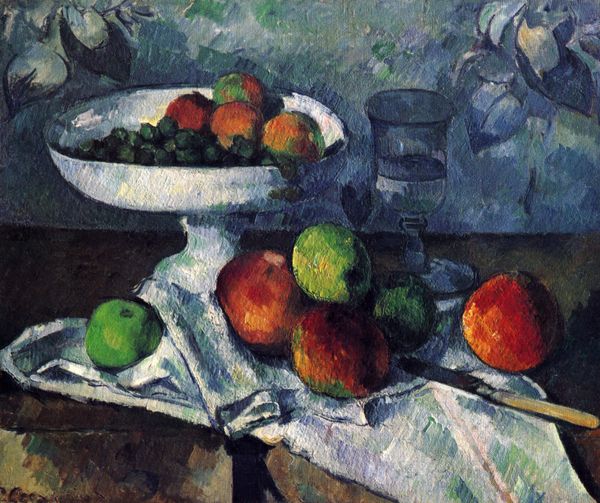
painting, oil-paint, impasto
#
food
#
painting
#
oil-paint
#
oil painting
#
impasto
#
fruit
#
plant
#
post-impressionism
Dimensions: 27 x 36 cm
Copyright: Public domain
Editor: Here we have Cézanne's "Still Life with Pomegranate and Pears," painted around 1890. It's an oil painting and it feels almost… unstable, the perspective is skewed. What's your take on it? Curator: I see this painting as an interesting example of how still life moved beyond mere representation. Cézanne's focus wasn’t just on depicting fruit. Consider how still life painting at this time reflects changing attitudes toward art’s purpose in society. Traditionally, it would serve aristocratic patronage, showcasing wealth and luxury, what is Cèzanne showing in this painting by abandoning those academic precepts? Editor: Well, it certainly doesn't look like an advert for expensive goods. There is a plainness to the scene. It seems like it's a shift toward exploring the formal elements of painting? Curator: Exactly. This deliberate distortion, the shifting perspective, and use of impasto, challenges the traditional illusionistic role of painting. The artwork shifts toward its structural components. Now consider the accessibility of fruit compared to previous painting subjects. How might the presentation of common objects relate to changing class structures at this time? Editor: I never thought about that! That art became more aligned to the public role rather than personal enrichment. The painting reflects society. Curator: Indeed. What once was a luxury item reserved for the few, became a democratic object reflecting a shifting societal attitude. The changing role of art is captured by those humble pears. Editor: I’m beginning to understand Cèzanne’s revolutionary act through what might be read as an unremarkable still life. Curator: Precisely, a silent revolution painted in fruit and oils. This changes my perception of the art from now.
Comments
No comments
Be the first to comment and join the conversation on the ultimate creative platform.

